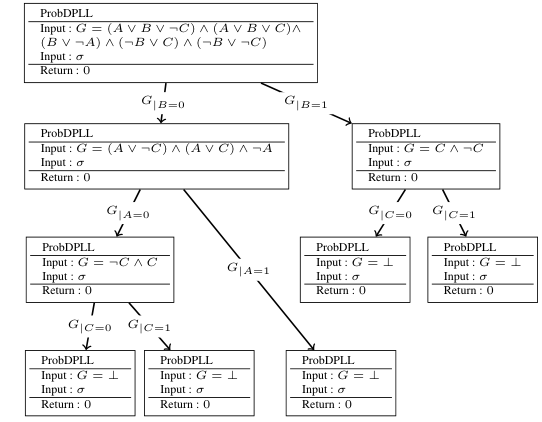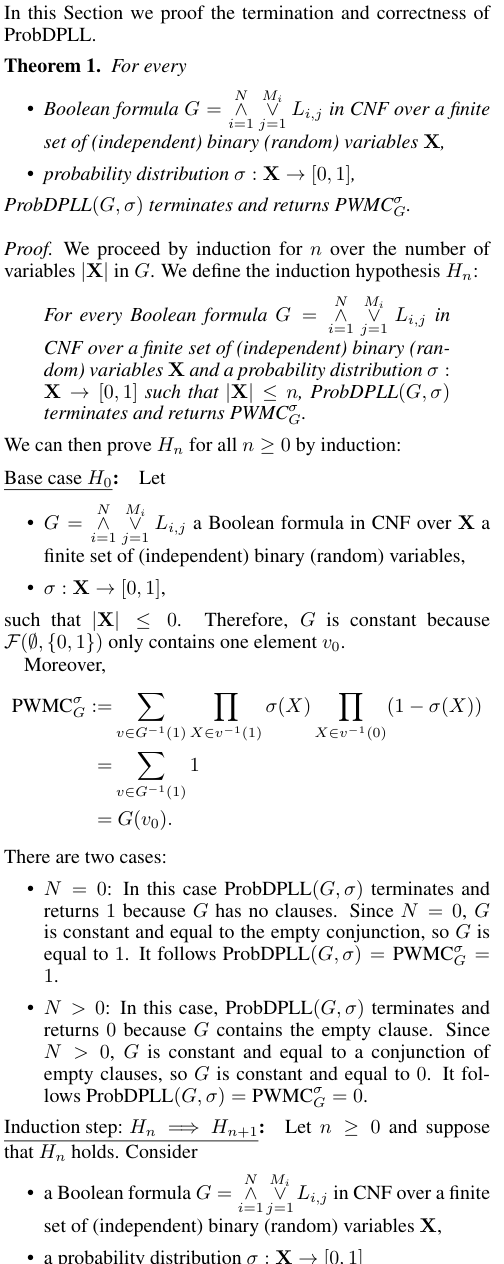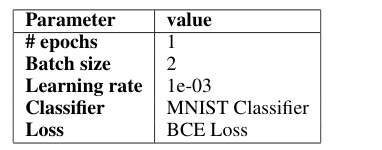On Scaling Neurosymbolic Programming through Guided Logical Inference
Thomas Jean-Michel Valentin, Luisa Sophie Werner, Pierre Genevès, Nabil Layaïda·January 30, 2025
Summary
Probabilistic Neurosymbolic Learning merges neural networks and symbolic programming. DPNL, an exact algorithm, tackles the #P-hard Probabilistic Weighted Model Counting Problem, enhancing scalability. It avoids computing logical provenance formulas, using an oracle for guidance. DPNL shows significant performance gains, improving neurosymbolic programming scalability. Implemented in Python with PyTorch, it uses Weights and Biases for experiment tracking. Baselines from DeepProbLog, A-Nesi, and Scallop are compared, with detailed hyperparameters provided. DPNL demonstrates its effectiveness in solving complex problems, particularly in the MNIST-SUM task.
Introduction
Background
Overview of neurosymbolic learning
Importance of probabilistic reasoning in neurosymbolic systems
Objective
To present DPNL, an exact algorithm for solving the #P-hard Probabilistic Weighted Model Counting Problem
To demonstrate how DPNL enhances scalability in neurosymbolic programming
Method
Data Collection
Description of data used for training and testing DPNL
Data Preprocessing
Techniques applied to prepare data for DPNL
Algorithm Design
Explanation of DPNL's approach to solving the #P-hard problem
Use of an oracle to avoid computing logical provenance formulas
Implementation
Details on the Python implementation using PyTorch
Integration of Weights and Biases for experiment tracking
Results
Performance Comparison
Baseline models from DeepProbLog, A-Nesi, and Scallop
Detailed hyperparameters for each model
Scalability Analysis
Demonstration of DPNL's performance gains over baseline models
Case Study: MNIST-SUM Task
Application of DPNL to a complex problem
Results and analysis of the MNIST-SUM task
Conclusion
Summary of Contributions
Recap of DPNL's effectiveness in solving complex problems
Future Work
Potential improvements and extensions of DPNL
Implications
Impact of DPNL on neurosymbolic programming and problem-solving capabilities
Basic info
papers
artificial intelligence
Advanced features



